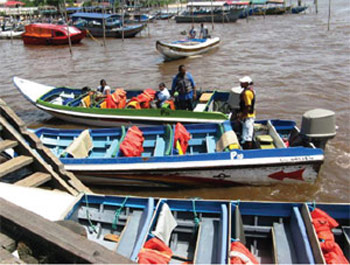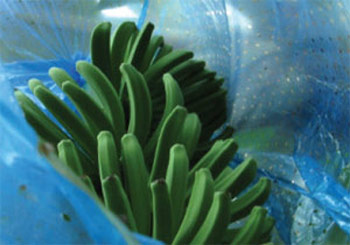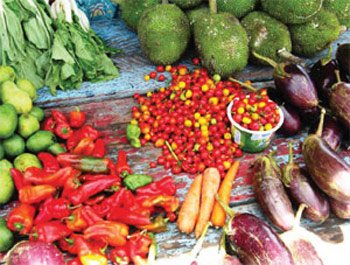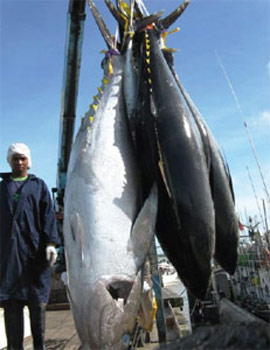|
August 2011

Issue Home >>
|
Fishy business: Students compare regional industries
To get some exposure to the agricultural sectors of other countries, postgraduate students of the Department of Agricultural Economics and Extension (DAEE) went off to Guyana and Suriname recently.
Done in conjunction with the Agribusiness Society of The UWI, St. Augustine Campus, this study tour also facilitated a regional project meant to develop fishing industries. The project, “An Assessment of Trinidad and Tobago Fish Industry: Gaining access to the European Union,” measures the readiness for export of fish products via a comparison of fish landing sites within Trinidad and Tobago, Guyana and Suriname.
From May 29 to June 5, 2011, the delegation visited fish landing sites, port facilities, agricultural based institutions and a variety of agricultural production and agro processing sites. The delegation – 12 postgraduate and two undergraduate students and Dr. Govind Seepersad – returned and began working on creating Re-useable Learning Objects (RLO), a conceptual tool shared by the lecturers of the Texas Agricultural and Mechanical University (Texas A&M) delegation who visited the DAEE earlier this year. The students will use these RLOs to share their practical experiences with as many students of the DAEE as possible.
The tour was made possible by financial assistance from the Department of Agricultural Economics and Extension, the Faculty of Science and Agriculture; Dean’s Office, The Inter-American Institute for Co-operation on Agriculture (IICA), and the UWI Guild of Students. The students themselves held numerous fundraisers.
 |
Bonasika, Guyana
Through Ms. Ida Sealey Adams and Mr. Christopher Anan of the New Guyana Marketing Company, the delegation visited the Bonasika region, which is accessible via the Essequibo River. Students saw the sustainable, agri-based lifestyle which relies on transport via the river – a small tributary enables the people to conduct their affairs regarding school, religion, sport and social activities. The group also met a pineapple farmer there who highlighted factors affecting agricultural production, most importantly the issue of transportation of inputs and produce.
Photo: Tristan Alvarez
|
 |
Suriname Switie Banana Company
This banana plantation and processing plant illustrated how size can be efficiently managed through the combination of traditional cultivation practices and careful selection of agricultural innovations. Field upgrades included replacing conventional irrigation techniques with drip line irrigation. Despite the tremendous cost of this upgrade, concurrent reductions in pest control and soil management make it an extremely successful measure.
Photo: Tristan Alvarez
|
 |
Parika, Guyana
The delegation first stopped in the town of Parika, an agricultural hub for many communities such as the one in Bonasika. Driven by the ferry service along the Essequibo River, the town acts as a port for much business and so has a large populace. The agricultural communities supply the Parika Market with a multitude of products.
Photo: Tristan Alvarez
|
 |
Suriname Fish Landing and Processing Facility
Approaching a seemingly innocuous dock in the early morning in no way prepared this group for the world class operation we were about to witness. The courtyard of the processing plant gave way to a private dock at which a multitude of ships of varying sizes and points of origin were moored. An astonishing array of seafood was unloaded before the group. The strict adherence by all vessels to cold chain and hygiene protocol was compellingly in evidence as even when fish were being moved from water to land, they remained in iced containers and were almost immediately packed in refrigerated trucks. Yellow fin tuna was the prize catch on this day.
Photo: Malcolm Wallace
|
|







